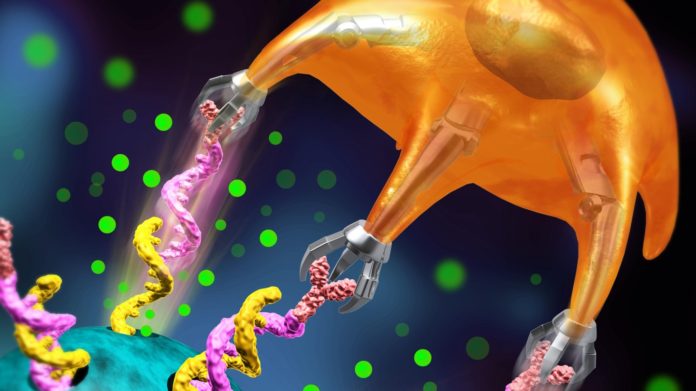Immunotherapy is more effective than chemotherapy and is a promising weapon in the fight against cancer. But it has some drawbacks like it manages to cure only about 20% of patients; the remaining 80% do not respond to this kind of treatment.
Li Tang, the head of EPFL’s Laboratory of Biomaterials for Immunoengineering within the School of Engineering, said, “But if doctors use a stronger form of immunotherapy in order to treat more people, it could become toxic for patients and lead to side effects.”
Now, EPFL scientists are developing a method that focuses immunotherapy only on tumor cells so that the treatments are more effective and less harmful to the body as a whole.
Tang explained, “When T cells come into contact with cancer cells, they destroy the cells by releasing chemical compounds as well as applying mechanical force.”
“For immunotherapy to work with limited patient toxicity, the drugs have to be delivered precisely during this step. Existing immunotherapy treatments use biochemical signals to control the drug-release process. But that’s a blunt tool because doctors have no control over how a drug diffuses within the body.”
To address this problem, scientists developed a method that uses a biomechanical signal. It means that drugs are released only when T cells come into contact with cancer cells.
“The T cells’ mechanical force is only triggered when they are touching their target cells.”
To develop this method, scientists used a silica microparticle containing several tiny holes. When the drug is placed in the holes, the double-stranded DNA capped the holes.
Tang said, “We chose DNA because T cells are able to break the double-helix strands. When a T cell comes into contact with the microparticle, its mechanical force automatically breaks the DNA – thereby releasing the drug.”
“For now we’ve only just completed the proof of concept stage. We’ve shown that our idea works, but we need to develop the technology further before we can start conducting clinical trials.”
In the future, scientists will work on improving the system’s sensitivity, shrinking the microparticle down to the nanometric scale, and trying it out with different drugs.
This is the first time scientists used the mechanical force of T cells in immunotherapy applications.
Journal Reference:
- Kewen Lei et al. T cell force-responsive delivery of anticancer drugs using mesoporous silica microparticles. DOI:10.1039/D0MH01285H
